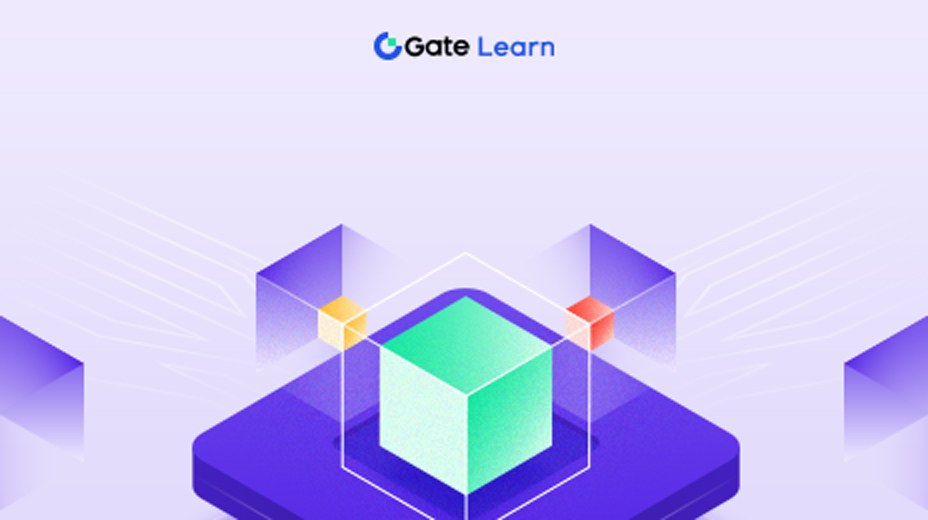حلول الطبقة الثانية على سلاسل البلوكشين الرئيسية
كما قلنا من قبل، تهدف حلول Ethereum Layer 2 إلى تحسين قابلية التوسع والسرعة والكفاءة للشبكة مع الحفاظ على الأمن واللامركزية. T
حلول إيثريوم من الطبقة الثانية
نظرة عامة على مشاريع إيثريوم من الطبقة الثانية الشهيرة
كما قلنا من قبل، تهدف حلول Ethereum Layer 2 إلى تحسين قابلية التوسع والسرعة والكفاءة للشبكة مع الحفاظ على الأمن واللامركزية. تساعد هذه الحلول في معالجة مشكلات مثل رسوم المعاملات المرتفعة وتسوية المعاملات البطيئة على شبكة إيثريوم. تتضمن بعض مشاريع إيثريوم لاير ٢ الشهيرة ما يلي:
- التحكيم: يستخدم مجموعات متفائلة للتحقق من صحة العقود الذكية، مما يسمح بزيادة إنتاجية المعاملات مع الحفاظ على الأمن واللامركزية. تعمل سلسلة تجميع Arbitrum بالتوازي مع السلسلة الرئيسية لإيثريوم، باستخدام إيثريوم لتخزين البيانات وحل النزاعات على السلسلة.
- التفاؤل: مشروع بارز آخر يستخدم مجموعات متفائلة لمعالجة مشكلات ازدحام إيثريوم وقابلية التوسع. يستخدم التفاؤل تقنية تسمى «أدلة الاحتيال» لضمان صحة المعاملات، مما يتيح تنفيذ العقود الذكية بشكل أسرع وأكثر فعالية من حيث التكلفة.
- ZKSync: حل لتوسيع المستوى من الطبقة الثانية يستخدم مجموعات المعرفة الصفرية لتوفير معاملات آمنة ومنخفضة التكلفة وسريعة على Ethereum. تستفيد ZKSync من براهين المعرفة الصفرية للحفاظ على سلامة الشبكة أثناء ضغط بيانات المعاملات.
- Polygon (المعروف سابقًا باسم Matic Network): حل تحجيم متعدد السلاسل لـ Ethereum يجمع بين تقنيات الطبقة الثانية المختلفة، بما في ذلك البلازما وZK-rollups والتجميعات المتفائلة. تقدم Polygon إطارًا مرنًا لبناء وربط شبكات بلوكتشين المتوافقة مع إيثريوم.
مقدمة إلى ZKSync، بوليغون، ZKEVM، ستاركوير، ازتيك
- Zksync: Zksync هو حل لتوسيع الطبقة الثانية يستخدم مجموعات zk لتمكين المعاملات السريعة ومنخفضة التكلفة على Ethereum. وهو يسمح بنقل أي رمز ERC-20 أو ERC-721 مع عمليات سحب سريعة إلى شبكة إيثريوم الرئيسية. تستخدم Zksync أدلة المعرفة الصفرية للتحقق من صحة المعاملات خارج السلسلة قبل إرسالها إلى شبكة Ethereum الرئيسية، مما يسمح بمزيد من قابلية التوسع وأوقات تأكيد أسرع.
- Polygon ZKEVM: Polygon ZK-EVM هو حل تحجيم من الطبقة الثانية يستخدم مجموعات zk وإثباتات المعرفة الصفرية لتمكين المعاملات السريعة والرخيصة على شبكة Ethereum. يوفر ZK-EVM بيئة متوافقة تمامًا مع EVM لنشر العقود الذكية، مما يسمح بالتكامل السلس مع تطبيقات Ethereum dApps الحالية. كما أنها تتيح إنشاء تطبيقات جديدة للحفاظ على الخصوصية على شبكة إيثريوم.
- Starkware: Starkware هو حل للتوسع من الطبقة الثانية يستخدم مجموعات zk و StarKs (شكل من أشكال إثبات عدم المعرفة) لتمكين المعاملات السريعة والقابلة للتطوير على Ethereum. إنه يوفر منصة لبناء ونشر التطبيقات اللامركزية ذات الإنتاجية العالية والكمون المنخفض والحد الأدنى من رسوم الغاز. تسمح Starkware أيضًا بإنشاء معاملات خاصة وعقود سرية على شبكة Ethereum.
- Aztec: Aztec هو حل لتوسيع نطاق الطبقة الثانية يستخدم مجموعات zk وبروتوكولًا يركز على الخصوصية يسمى «zk-zk rollup» لتمكين المعاملات الخاصة والعقود الذكية على Ethereum. وهو يسمح بالمعاملات السرية دون الكشف عن المبالغ أو الأطراف المعنية، مما يتيح مزيدًا من الخصوصية وإخفاء الهوية على شبكة إيثريوم. يوفر Aztec أيضًا أدوات للمطورين لإنشاء تطبيقات لامركزية تحافظ على الخصوصية على Ethereum.
دراسة حالة: التفاؤل والتحكيم
يعد كل من Optimism و Arbitrum من المشاريع البارزة في Ethereum Layer 2 التي تهدف إلى معالجة مشكلات ازدحام الشبكة وقابلية التوسع. وهي تستخدم مجموعات متفائلة للتحقق من صحة العقود الذكية، مما يسمح بزيادة إنتاجية المعاملات مع الحفاظ على الأمن واللامركزية.
الحكم: ما هو التحكيم?

يستخدم Arbitrum Rollup، وهو بروتوكول من الطبقة الثانية يجمع بين عمليات التجميع المتفائلة والتنفيذ الذكي للعقود.
تعتمد Arbitrum Rollup على سلسلة إيثريوم الرئيسية لتخزين البيانات وحل النزاعات على السلسلة، بينما تعمل سلسلة التجميع بالتوازي من أجل معالجة أسرع. يوفر لمطوري إيثريوم بيئة قابلة للتطوير لنشر العقود الذكية مع الحفاظ على الأمن واللامركزية في إيثريوم.
التفاؤل: ما هو التفاؤل (OP)؟

يستخدم مجموعات متفائلة لضغط بيانات المعاملات وتقليل الحمل على سلسلة إيثريوم الرئيسية. يستخدم «أدلة الاحتيال» لضمان صحة المعاملات، مما يتيح تنفيذ العقود الذكية بشكل أسرع وأكثر فعالية من حيث التكلفة. تعمل سلسلة تجميع Optimism بالتوازي مع سلسلة إيثريوم الرئيسية، مستفيدة من إيثريوم لتخزين البيانات وحل النزاعات على السلسلة.
حلول بيتكوين من الطبقة الثانية
نظرة عامة على مشاريع Bitcoin Layer 2 الشهيرة
تم تصميم حلول Bitcoin Layer 2 لمعالجة قيود الطبقة الأولى من Bitcoin، بما في ذلك قابلية التوسع ورسوم المعاملات المرتفعة والسرعة. تعتمد هذه الحلول على بلوكتشين الحالية لتحسين وظائفها وأدائها.
مشروع الطبقة الثانية الأكثر شهرة لبيتكوين هو Lightning Network، الذي يعزز قدرات شبكة بيتكوين من خلال تمكين المعاملات بشكل أسرع، وخفض الرسوم، وزيادة قابلية التوسع. كما أنه يسهل تطوير التطبيقات اللامركزية (dApps) والعقود الذكية على شبكة Bitcoin.
دراسة حالة: شبكة البرق

شبكة Lightning Network هي حل من الطبقة الثانية يهدف إلى جعل Bitcoin قناة دفع أكثر كفاءة من خلال حل قابلية التوسع ورسوم المعاملات المرتفعة وقيود السرعة. تتضمن الميزات الرئيسية لشبكة Lightning ما يلي:
- قنوات الدفع: يتم تسهيل المعاملات بين العقد من خلال قنوات الدفع، مما يسمح بإجراء معاملات متعددة خارج السلسلة قبل تسويتها على سلسلة بيتكوين الرئيسية.
- المدفوعات متعددة القفزات: تتيح شبكة Lightning Network للمستخدمين توجيه المدفوعات من خلال عقد وسيطة متعددة، مما يقلل الحاجة إلى قنوات مباشرة بين جميع المشاركين ويحسن الاتصال العام بالشبكة.
- العقود المجزأة ذات الإطار الزمني (HTLCs): تضمن هذه العقود أن المدفوعات آمنة وقابلة للتنفيذ، حتى إذا فشل أحد الأطراف في التعاون. من خلال مطالبة المشاركين بالإقرار باستلام الدفع خلال إطار زمني محدد، تمنع HTLCs الأموال من الحجز إلى أجل غير مسمى.
- السعة والسرعة والرسوم: تتمتع شبكة Lightning Network بسعة أكبر من أنظمة الدفع التقليدية مثل VISA، وسرعة شبه فورية، ورسوم قريبة من الصفر، مما يجعلها حلاً مثاليًا لمعالجة قيود الطبقة الأولى من Bitcoin.
- إخفاء الهوية: تتم معاملات Lightning Network خارج السلسلة، مما يضيف طبقة إضافية من الأمان والخصوصية مقارنة بشبكة Bitcoin الرئيسية، والتي تكون مستعارة وليست مجهولة.
توفر شبكة Lightning Network حلاً قابلاً للتطوير وفعالًا للمدفوعات الصغيرة والمعاملات، مما يعزز وظائف Bitcoin كعملة رقمية. من خلال تنفيذ حلول الطبقة الثانية مثل Lightning Network، يمكن لنظام Bitcoin البيئي الاستمرار في النمو والتطور مع الحفاظ على مبادئه الأساسية للأمن واللامركزية.





